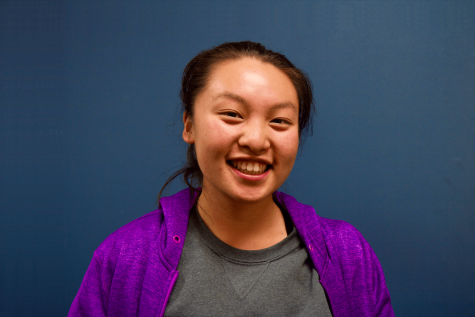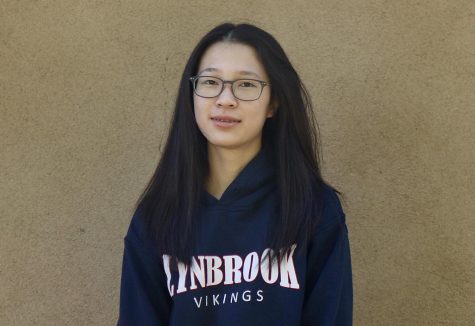What Comes After the Rainbow: High School Dating For LGBTQ+
October 5, 2018
 Sophomore Clarissa Brown* recalls her first date with her girlfriend. As the two had a shared fascination for the arts, Brown’s girlfriend invited her to an art museum. For the past six months, they’ve made memories while going to coffeeshops and sharing food, learning more about each other in their relationship.
Sophomore Clarissa Brown* recalls her first date with her girlfriend. As the two had a shared fascination for the arts, Brown’s girlfriend invited her to an art museum. For the past six months, they’ve made memories while going to coffeeshops and sharing food, learning more about each other in their relationship.
Despite having good dating experiences, Brown, like many in queer relationships, has faced obstacles that make it difficult to be authentic in front of others. Brought up with more conservative ideals, Brown finds the idea of coming out to her parents about her sexuality and relationship difficult.
“I haven’t come out to my parents yet, and I’m afraid that they will stop supporting me,” Brown said. “I’m very scared about how they would react and what would happen in that situation.”
Brown’s fear of being unaccepted isn’t uncommon for LGBTQ+ teens. According to a youth survey conducted by Human Rights Campaign, 92 percent of LGBTQ+ teens say they hear negative messages about being LGBTQ+ by peers, the Internet, school and other external influences. As a result, they may feel forced to hide their relationships and sexual orientation until they feel safe and accepted.
“Usually, teens in LGBTQ+ relationships are hesitant and just say that they’re friends,” Onderko said. “They try to avoid the girlfriend-boyfriend label because they feel like that increases pressure. Instead, they keep it more private.”
LGBTQ+ children and their parents or other relatives coming from different generations may come across difficulties in finding common ground on their viewpoints.
“My parents are accepting, but I feel like I can’t talk about [my relationship] mainly with my grandparents,” said sophomore Jeffrey Williams*, who identifies as bisexual and nonbinary and is in a same-sex relationship.
At Lynbrook, some in the queer community believe that although the population leans liberal, homophobia is still common.
“I hear ‘that’s so gay’ and the f-slur all the time,” said sophomore Aanya Singh*, who identifies as bisexual. “I went to Christian school before, but I feel the homophobia is much worse here. There are so many good people here, but there are also people who have so much hatred for people they know nothing about. I think it’s cultural, because ideas from previous generations are passed down. Many of our parents are immigrants from countries where it was more common for LGBTQ+ people to experience discrimination or where same-sex marriage was illegal.”
With more exposure to the experiences of LGBTQ+ relationships, the LGBTQ+ community hopes that they can create safer and more understanding environments, fostering more acceptance. According to a survey of LGBTQ+ Americans conducted by Pew Research Center, 92 percent of adults say that society has been more accepting of them in the past decade. The LGBTQ+ advocates and community seems to be making huge steps towards normalizing the notion of the LGBTQ+.
“I think being an ally is important,” said senior Ariel Wang, treasurer of Lynbrook’s Gender and Sexuality Alliance club. “Be proactive and stand up for others when you see them being mistreated or disrespected. Respect their pronouns. I’ve realized that there aren’t many differences between straight and queer relationships. My friends in straight relationships and queer relationships all tell me the same things and experience the same emotions.”
Those in the LGBTQ+ community hope others will look beyond a person’s sexuality and appreciate them for other aspects of themselves, such as personality or talents.
“Sexuality isn’t a person’s defining trait,” Singh said. “There are more parts to who I am than just who I’m attracted to. Everyone is a multi-faceted person. I feel like people don’t really care about the other facets when you’re different.”
Religion can also impact LGBTQ+ relationships, as many have set guidelines as to how relationships should look. For example, some Christians believe homosexual relationships are considered unholy and sinful, which can pose as threats to people in queer relationships. In a 2013 survey of LGBT Americans conducted by Pew Research Center, most religious groups were seen as unfriendly to the LGBTQ+ community.
Brown, however, feels differently about the importance of religion in her life.
“I was raised Christian, and I definitely believe in the concept of God. My parents are Christian, but they aren’t necessarily deep into their relationships with God,” Brown said. “I feel the Bible is misconstrued. I do not feel my faith is in conflict with my sexuality. They can coexist.”
Additionally, those in queer relationships can often feel misrepresented or underrepresented by the media. In media such as TV shows, portrayals of gay couples may come off as caricatures. For example, hit TV show “Modern Family” features queer couple Cam and Mitch, who some think come across as dramatic or stereotypically gay. As a result, such portrayals are misleading and don’t encompass realistic queer relationships.
“There’s a lot of stereotyping and exaggeration,” Williams said. “People think we always say, ‘I’m so gay for you’ to each other. Being in a queer relationship isn’t that different from being in any other relationship. I wish more people would understand that.”
The experience of being in a relationship, regardless of gay or straight, can help teens discover aspects of their identity, such as boundaries and priorities.
“The developmental task of adolescence is identity formation,” said Lynbrook psychologist Dr. Brittany Stevens. “You learn a lot through pairing off with someone. You learn about balance, prioritizing and speaking up for yourself. I think those are some positive things that can come from the high school dating experience.”
For Williams, his relationship has opened him to new hobbies, taught him more about how he should treat other people of different identities and helped him learn more about his own identity. Williams met his boyfriend online through a video game. They talk every day over the phone and plan to meet in person every three months. One of his favorite memories is the first time they met in person.
“My boyfriend is transgender and taught me a lot about the challenges transgender people face,” Williams said. “He also helped me learn more about my own sexuality and helped me realize that I identify as nonbinary. He’s my best friend.”
Dating for LGBTQ+ teens may face extra challenges, but the experiences can also bring those involved joy and appreciation for someone who understands them. In a way, the struggles they face and experiences they gain from dating are crucibles that help mold and shape their idea of relationships. They learn more about themselves and their standards, and above all, what a relationship should be.
“Fundamentally, it’s just you loving someone else,” Stevens said. “Their gender is not the most important quality. Are they kind and respectful? Are they going to prioritize you? These are all the things I would ask anybody in any relationship.”




























































